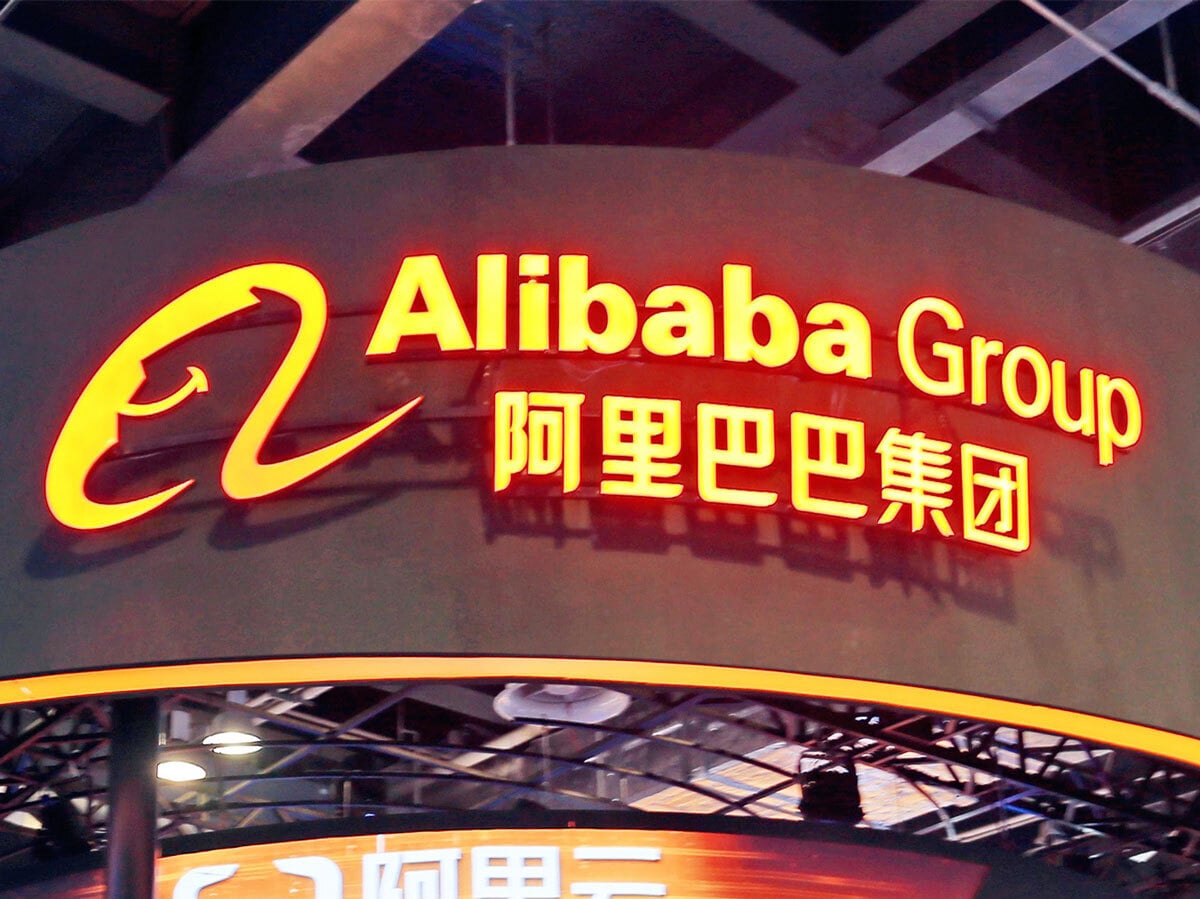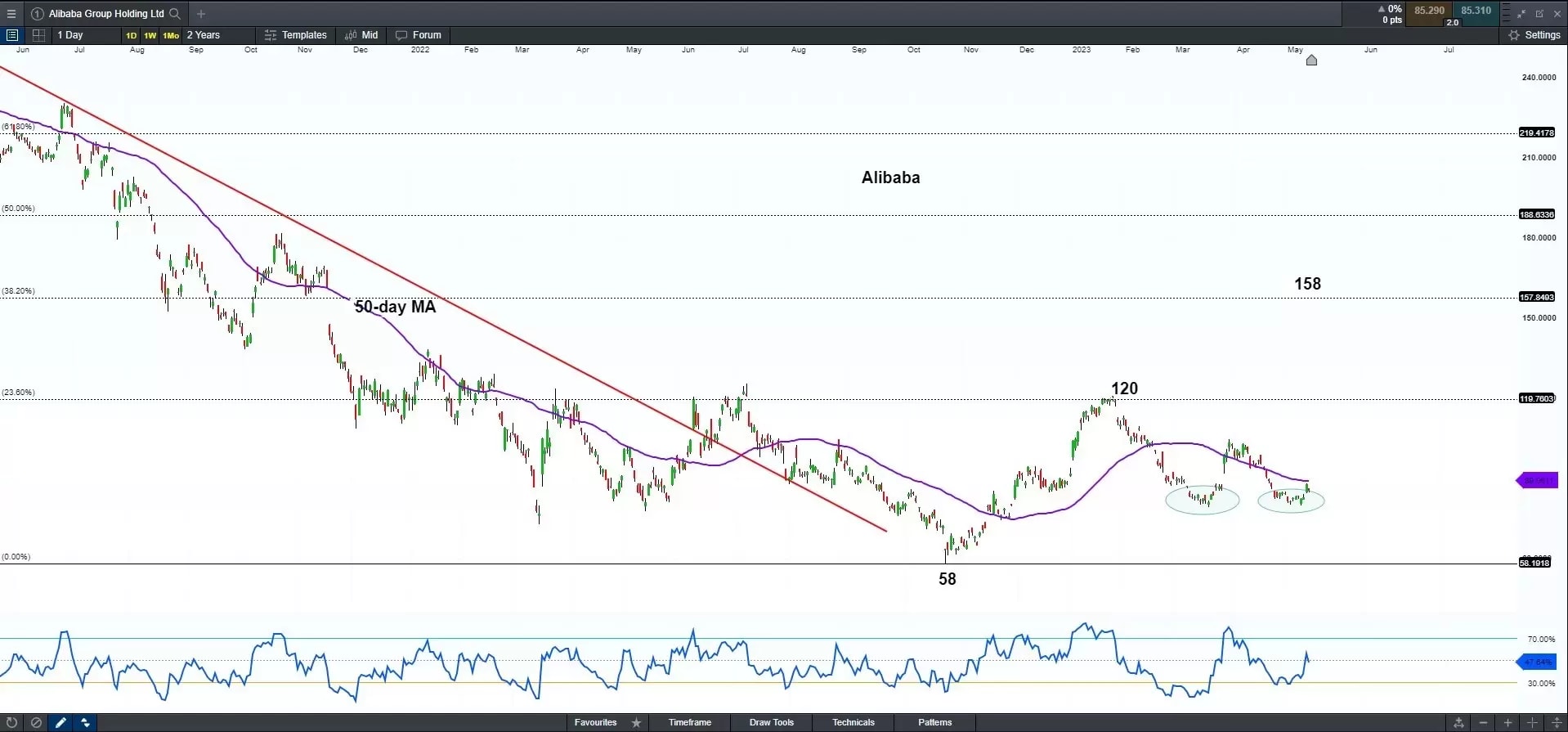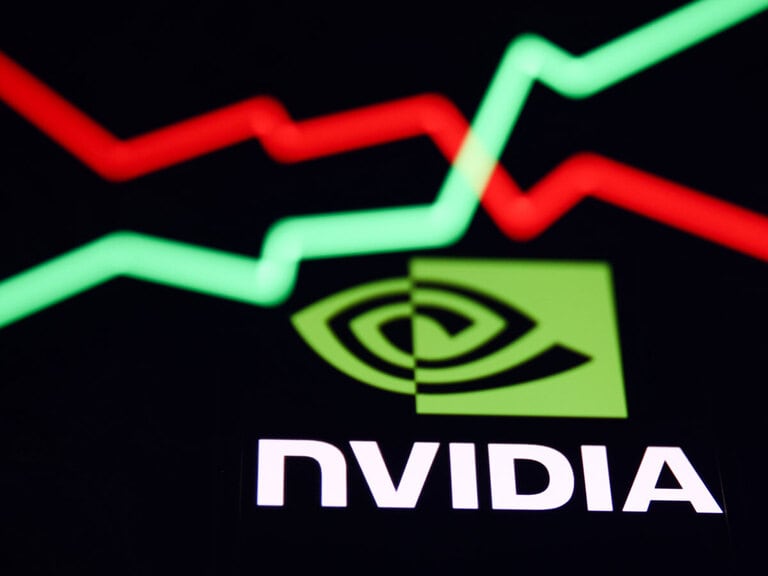The largest Chinese e-commerce giant, Alibaba (NYSE: BABA and HKEX: 9988), will report its Match quarter earnings before the US markets open on 18 May. The company’s shares are flat on a year-to-date performance, but have swung widely on a combination of factors since January.
While Alibaba’s overall growth improved significantly in the December quarter last year, its business split, generative AI development, and China’s reopening optimism, had mixed impacts on the online retailer’s performance. Alibaba’s shares were more resilient than other US-listed Chinese tech companies, such as JD.com and Baidu, suggesting investors are optimistic about the conglomerate’s growth outlook.
Will there be a further rebounding opportunity for Alibaba’s shares? Below are the aspects that investors should look at to gauge the company’s growth trajectory.
Improved profit margin on decline in revenue expected
Alibaba strongly beat expectations in the December quarter of 2022, reporting earnings per ADS at 19.26 yuan ($US2.79), up 14% year on year. The revenue was at 247. 76 billion yuan ($US35.92 billion), returning a positive growth of 2% from a flat performance in the September quarter after China ended its strict Covid-zero curbs. Both domestic and international online sales recovered swiftly, accounting for nearly 80% of the overall revenue. Notably, its logistic arm, Cainiao, was seen a robust rebound in the quarter due to Beijing’s relaxation of the Covid containment policy, representing 8% of Alibaba’s total sales. Given that online sales are the primary driver of its business growth, China’s domestic demands play a key role in its performance. According to the National Bureau of Statistics of China, China’s online retail sales rose 8.6% year on year in the first three months. However, weakness has been felt in China’s domestic demand recently due to the prolonged Covid curbs in the past year. Its rival, JD.com’s product sales fell 2.4% in retail sales, as shown in the company’s first-quarter earnings reports.
According to Yahoo Finance, Alibaba’s March quarter revenue is expected to be $US 30.25 billion, down 6.4% from a year ago. The earning per ADS estimate is $US1.35, or up 8% year over year. The forecasts suggest that Alibaba may have improved its profit margin by reducing costs, despite an expected decline in overall revenue. As CFO Toby Xu indicated, “…we continued to improve operating efficiency and cost optimization that resulted in robust profit growth” in the press conference last quarter.
Alibaba joins AI-powered chatbot club via its cloud division
Though retailing sales are the biggest contributor to Alibaba’s overall revenue, the cloud business is considered a critical segment for future growth. In the December quarter of 2022, Alibaba’s cloud business slowed to a 3% year-on-year growth, down from over 30% in 2021, marking the weakest performance last year. However, with the ChatGPT-alike AI race heating up globally, Alibaba also joined the generative AI race, announcing a chatbot called Tongyi Qianwen, which will be integrated across all products offered by the company. Its enterprise collaboration platform, DingTalk, will be first developed with chatbot technology. However, AI machine learning requires massive data processing work supported by computing CPUs, which would be costly for its cloud division. Hence, Alibaba Cloud will be in the spotlight in its upcoming earnings report.
Alibaba’s unit split
The practice of Alibaba’s unit split boosted its share price by 14% on 28 March, which is considered a movement that other Chinese tech may follow. The split echoed the Chinese government’s antitrust policy and offered the potential for these sub-units to be listed separately. On 4 May, Alibaba’s global online commerce Arm, Lazada, and AliExpress was reportedly considering a US IPO valued at as much as US$39 billion.
Technical analysis
Directional bias - bullish
Source: CMC Markets NG as of 16 May 2023
Alibaba’s ADR shares formed a potential double-bottom recently, with near-term resistance around the 50-day moving average at 89. A bullish breakout of this level could take its shares to test between 102-104, the high in late March and early April, then 120, confluence with a 23.60% Fibonacci retracement.
On the flip side, a breakdown below the recent low of 82 may send the share’s price to its October low of 58.







